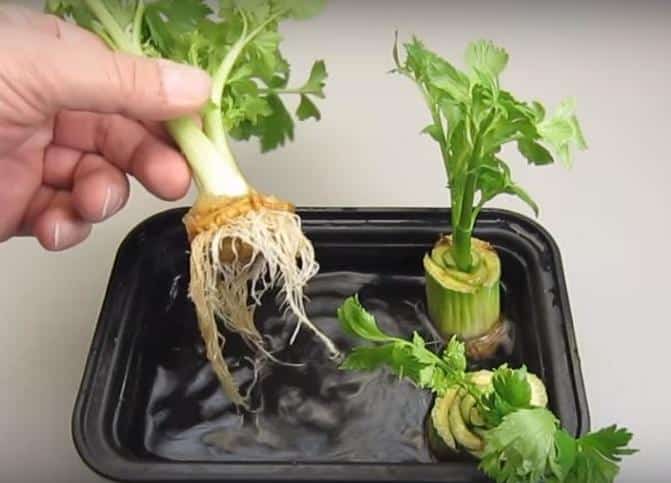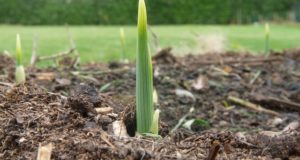|
Listen To The Article
|
Vegetables typically get one go-round in the kitchen, and then we toss the carrot tops, sprouted garlic or celery bottoms in the compost bin or garbage can without giving it a second thought. Who would imagine that many kitchen scraps actually have the potential to regrow into usable vegetables?
Most vegetables won’t regrow indefinitely, and they probably won’t grow enough to feed your family for very long. However, re-growing vegetables can save you money and in the meantime, many are attractive, decorative plants that bring a bit of the outdoors into your kitchen. If you’re looking for fun gardening projects to inspire kids, this one is sure to be a hit.
Try these vegetables:
1. Celery, bok choy and romaine lettuce – Slice the bottom from the bunch and put it in a bowl of warm water with the cut side facing up and just the root end submerged. Watch for leaves to emerge from the center as the outer section gradually turns yellow and deteriorates. Once the celery bottom has several healthy leaves, plant it in a container filled with potting mix, with only the leaf tips showing above the soil.
Story continues below video
2. Avocado – This is an old trick that kids love. Unfortunately, the plant isn’t likely to bear fruit unless you’re patient and willing to wait a dozen years or so. In the meantime, enjoy the lush, green plant.
To grow an avocado plant, just use toothpicks to suspend a cleaned seed, wide end facing down, over a glass of water so only the bottom half of the seed is submerged. Place the glass in a warm spot where the avocado is exposed to indirect sunlight. Check the water every day and add more as needed.
Looking For Non-GMO Seeds? Look No Further!
Once the stem grows to about 6 inches, cut it down to about 3 inches. When you notice new leaves, plant the avocado in potting mix with about half the seed above the surface of the soil. Keep the soil moist but not soggy.
Story continues below video
3. Potatoes – Cut potato peels into 2-inch chunks, each with at least two eyes. Set the chunks on the countertop to dry for a day or two, and then plant them in a large, deep container with the eyes facing up. Cover the potato chunks with 4 inches of soil, and then as the plant grows, add an extra 4 inches of soil. The new, tender potatoes will be ready to harvest in a few weeks.
4. Onions – Slice the root end from the onion, along with about a half-inch of the onion. Plant the onion in potting mix, root side down, and water as needed to keep the soil moist. The onion should be ready to harvest in several weeks. At that time, cut off the root end and grow yet another onion.
5. Ginger root – Plant a small chunk of ginger root in potting mix, with the buds facing up. Water as needed to keep the soil moist, and then harvest the entire plant, roots and all, in a few months. Grow ginger root indefinitely by saving a small chunk from the new root.
6. Garlic – If you’ve left a garlic clove a little too long and it’s sprouted, don’t throw it away. Just plant the clove in a pot with the root end facing down. When the clove is well-established and displays new growth, trim the shoots so that energy is concentrated on the clove. You can grow garlic this way indefinitely; just start a new garlic clove from the newly grown bulb.
7. Carrots – Unfortunately, you can’t grow new carrots with carrot tops, but you can use the lacy tops as an attractive garnish. Put the carrot tops in a tray or dish with a little water, cut sides down, and place the dish in bright sunlight. Check the carrot tops daily and replenish the water as needed. Snip off small amounts as often as needed.
8. Cilantro – It’s easy to start this pungent culinary herb by placing a few stems in a jar of water. When the stems root, plant them in a pot. The new plant will be ready to use in a few months.
What advice would you add? What vegetables would you have placed on our list? Share your ideas in the section below:
Every Year, Gardeners Make This Avoidable Mistake — But You Don’t Have To. Read More Here.
 Off The Grid News Better Ideas For Off The Grid Living
Off The Grid News Better Ideas For Off The Grid Living




